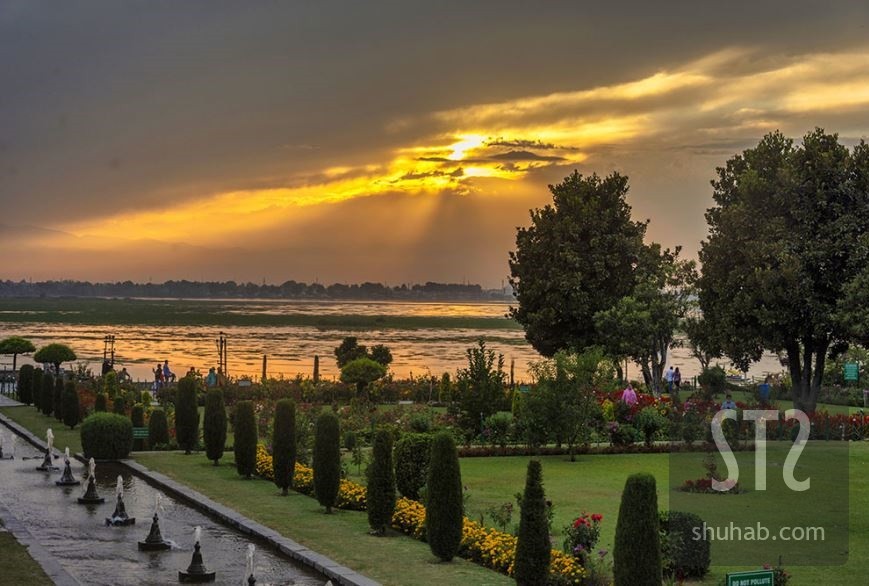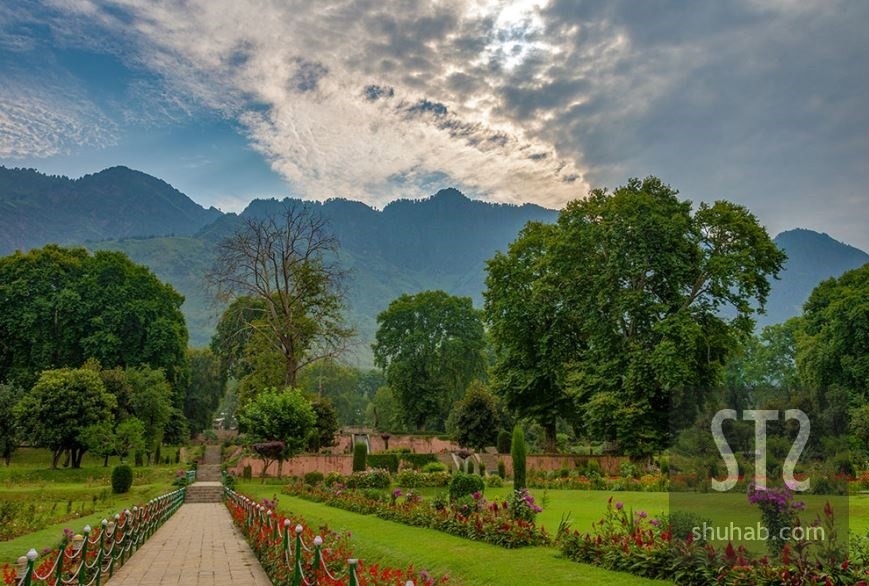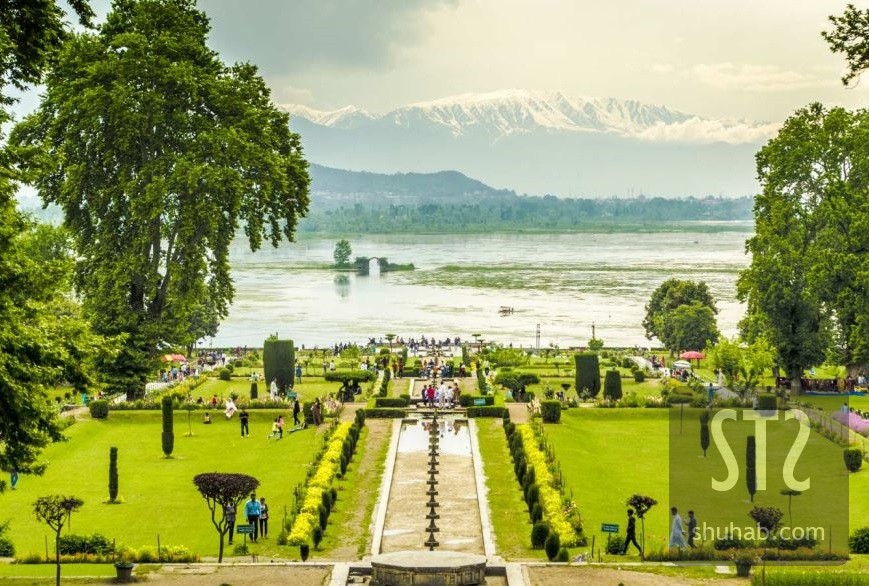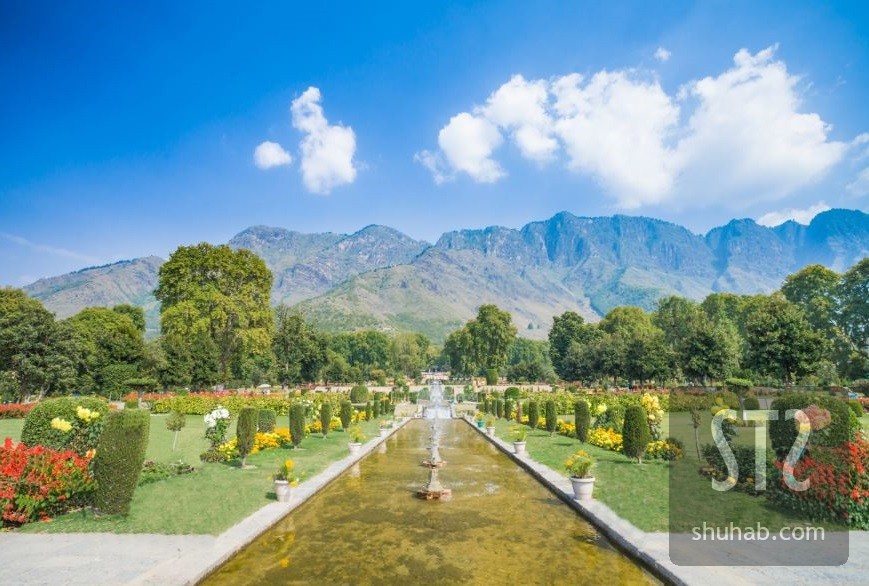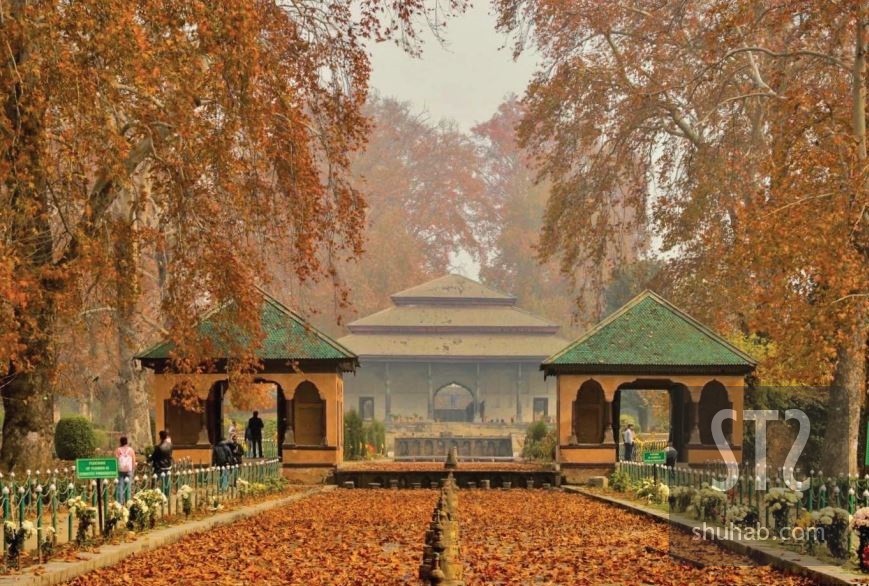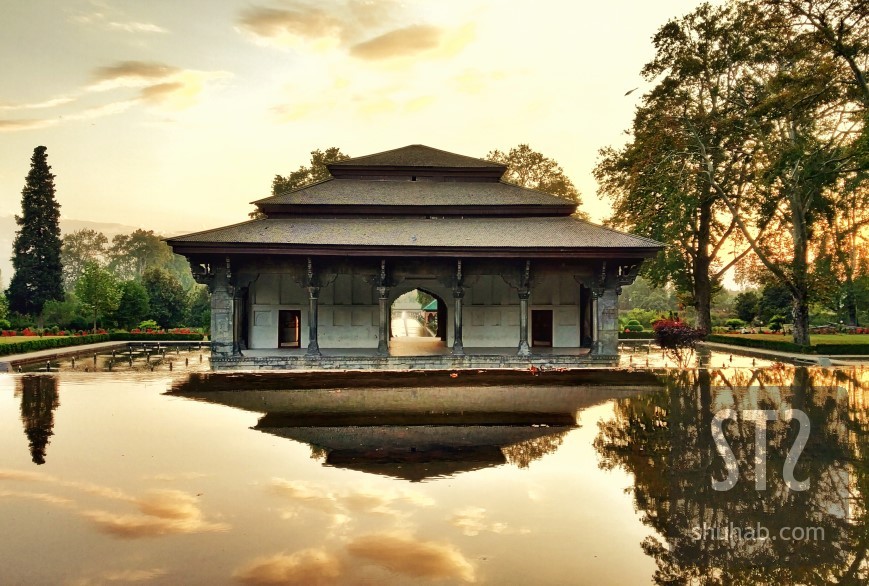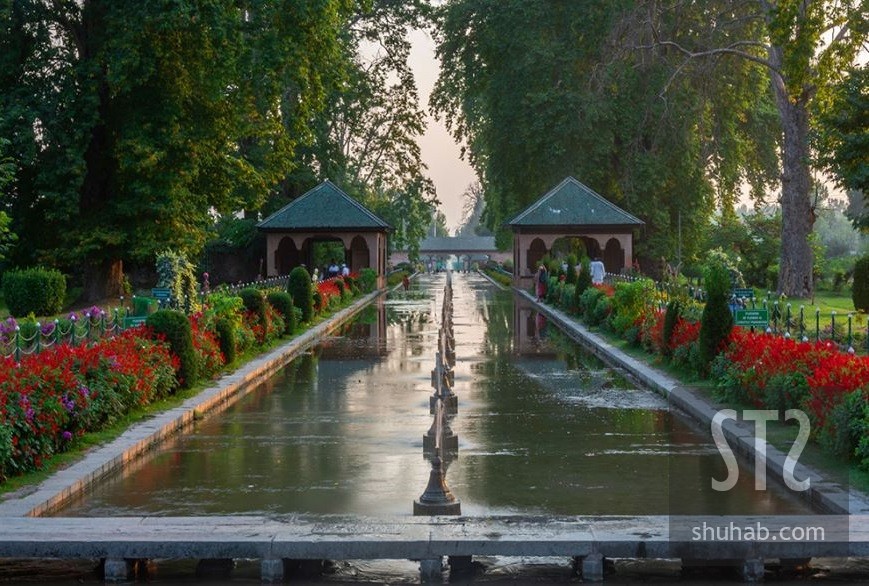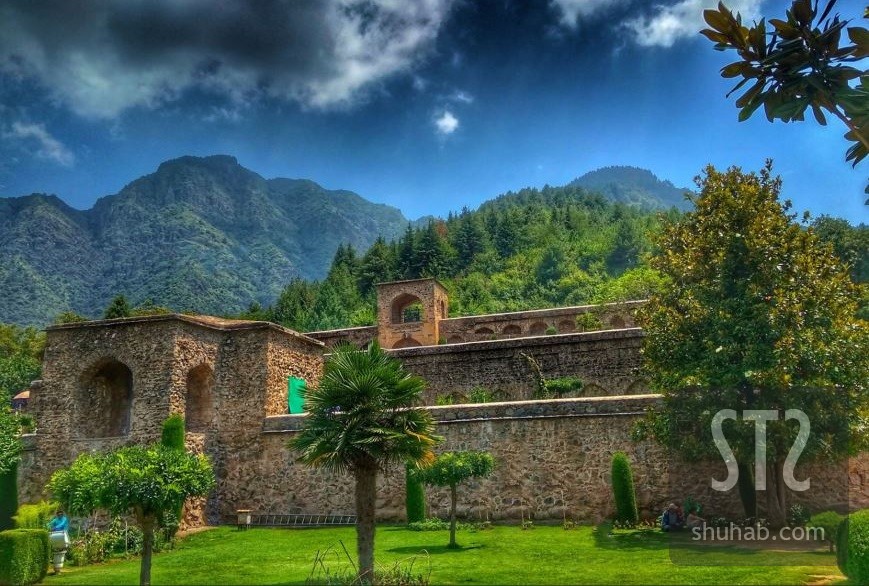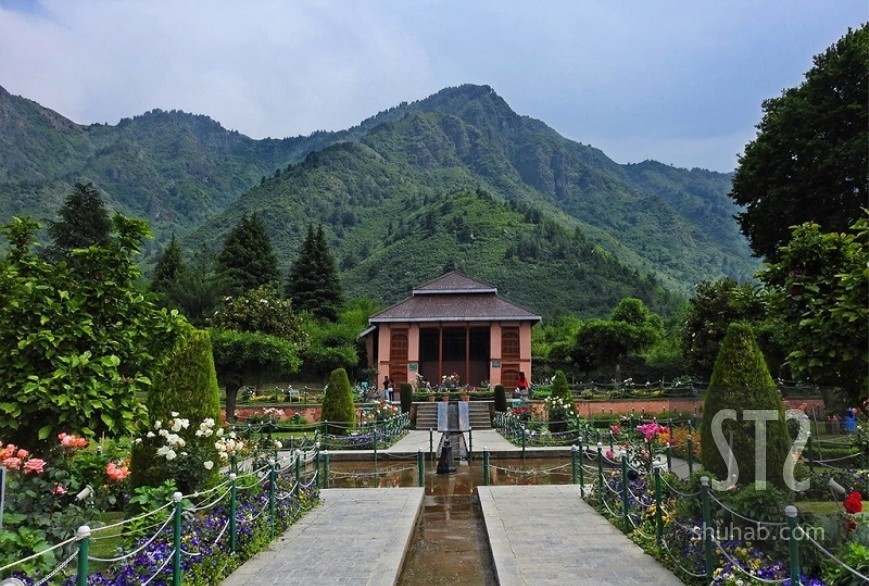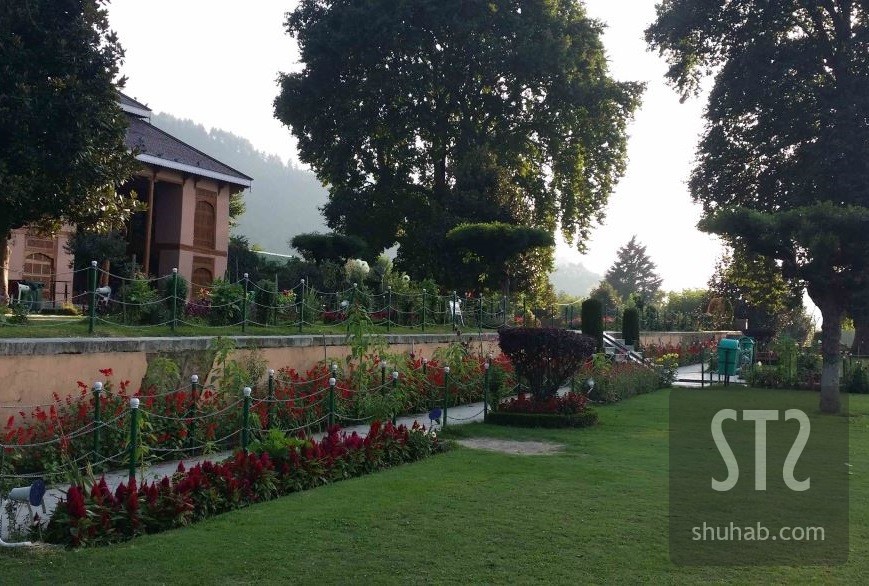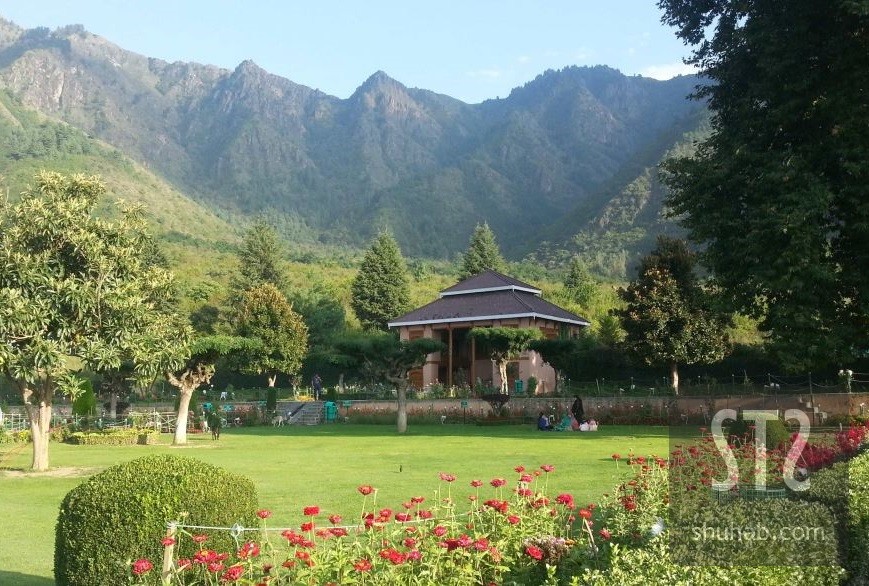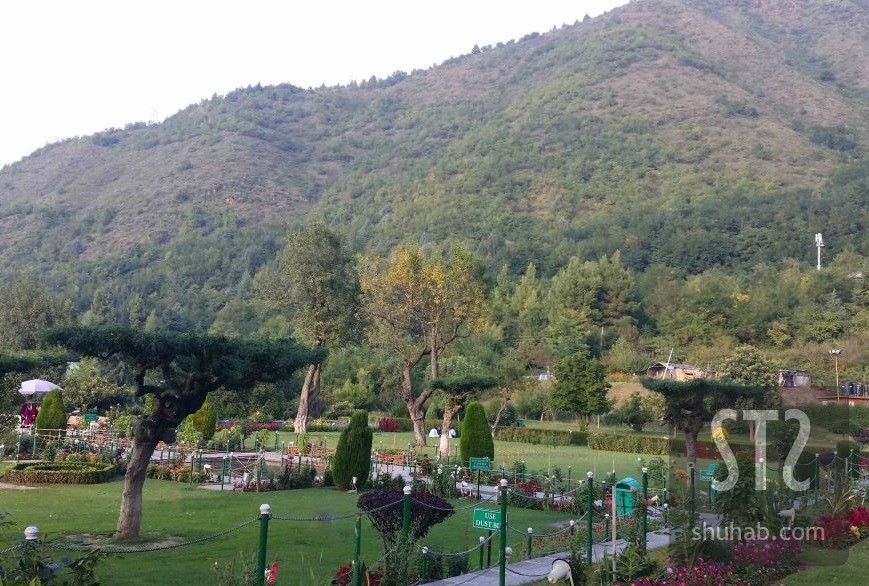Mughal Gardens, Kashmir
The celebrated Mughal gardens of Kashmir owe their grandeur primarily to Emperor Jahangir who had an undaunted love for Kashmir, and his son Shah Jahan. Jahangir was responsible for the careful selection of the sites and manoeuvring them to suit the requirements of the traditional paradise gardens.
Persian paradise gardens are a traditional design concept characterized by four-fold layouts, representing water, wind, fire, and earth, symbolizing a heavenly oasis on Earth.
However, their biggest challenge in Kashmir was the mountainous terrain and the need for water sources. The sites selected for the gardens were thus invariably at the foot of mountains with a source of water either in the form of streams or springs. This feature eventually resulted in terraced garden layouts. Undaunted by the challenges offered by mountainous terrain, the Mughal engineering skills and aesthetics helped in exploiting the dominating natural landscape and the available water resources to their maximum potential and achieved an unparalleled height of perfection.
The Mughal Gardens in Kashmir comprise of six ‘later’ gardens from the Mughal Period: Nishat Bagh, Shalimar Bagh, Chashma Shahi, Pari Mahal, Achabal Bagh and Verinag. They all were created as stand-alone gardens to be visited for pleasure. All of these gardens (except Verinag) follow a similar pattern with a central water channel sourced at natural springs. This channel which formed the central visual axis of the garden was further enhanced by avenues of poplars or chinar trees. There are one or more baradaris or pavilions with a central open space 'dalan' placed over these water channels. These water channels cascade down from one terrace to another in the form of chadars or falls, where they fill in the larger water tanks, hauz, squarish in form and having an array of fountains. Finally, the water from the central channel joins a water body, either a flowing stream nearby, as in case of Achabal, or a lake, as in case of Nishat Bagh and Shalimar Bagh.
The Mughal Gardens of Kashmir are an exceptional testimony of the excellent engineering skills and the creative & innovative ingenuity demonstrated by the Mughals in making optimum use of the abundant supply of water, difficult topography and the natural setting to fulfil their extraordinary landscape ambitions and needs. These gardens are unique and most representative surviving ensembles of a period of prolific activity that saw the creation of over 700 gardens in Kashmir during the Mughal Period.
#mughalgardens #nishatbagh #shalimarbagh #chashmeshahi #parimahal #achabal #verinag #dallake #srinagar #boulevard #foreshore #road #hariparbat #badamwari #zabarwan #kashmir #tourism
Mughal Gardens, Kashmir
Mughal Gardens are a type of garden built by the Mughals. These gardens feature symmetrical layouts, shaded lawns, and intricately designed water channels.
The garden style was influenced by the Persian gardens particularly the 'Charbagh' (quadrilateral gardens) structure, which is intended to create a representation of an earthly utopia in which humans co-exist in perfect harmony with all elements of nature.
